This week on the Naked Scientists an invitation to come and dive beneath the surface of the sea, to find out what is happening in the world's oceans. Your guides will be Marine Biologist Dr Annelise Hagan (University of Cambridge) and Ecology and Evolutionary Biologist Dr Stan Harpole (University of California, Irvine). Annelise will be talking about her project which monitors coral reefs and will explain why and how she does this, Stan will discuss his recent Nature paper on species loss resulting from reduced niche dimension and how nutrient pollution is responsible.
In this episode

Calling all junior Newshounds!
If you're a budding science journalist aged 14 to 16, then here's your chance to hit the headlines.
Cancer Research UK is running a science writing competition called SciNews, and the charity is looking for the best, most attention-grabbing news stories related to medicine or health.
The competition will be judged by top researcher (and Naked Scientists guest) Professor Fran Balkwill, along with Tim Radford, former science editor at the Guardian newspaper, and John Tickle, presenter of TV science show Braniac.
The first prize is a year's subscription to ace science magazine BBC Focus, a day with the Cancer Research UK press team, and the chance to record your winning story for the charity's podcast (presented by our very own Dr Kat).
Second and third prizes are great science goody bags, and all the winning entries will be published on the Cancer Research UK News & Resources website.
The competition is open to anyone aged 14-16 living in the UK, and you can find out more, including how to enter online at www.scinews.org.uk But you'd better be quick because the competition closes on the 30th April, so get writing!
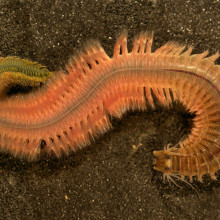
Humans have worm-based brains
For some of us, feeling like we have the brain of a worm is a common experience. But new research has shown that our brains may actually have evolved from worms, making the origins of the nervous system much older than previously thought.Vertebrates like us, insects and worms evolved from the same ancestor, but their central nervous systems are different and were thought to have developed only after the split. But new research from the European Molecular Biology Laboratory (EMBL) in Heidelberg now suggests that the last common ancestor of vertebrates, insects and worms already had a centralised nervous system similar to that found in vertebrates today. 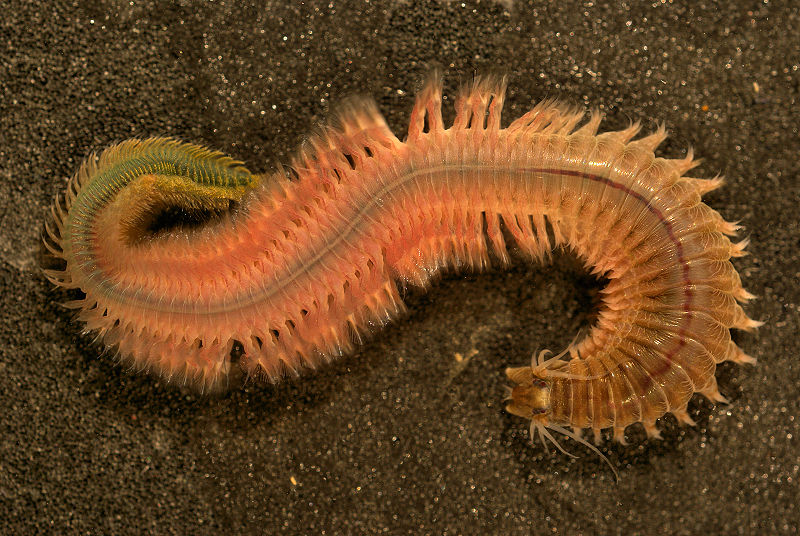 The last common ancestor we shared with worms an insects was a simple creature called Urbilateria. Since then, vertebrates have developed a nervous system with a brain and a spinal cord running down the back, while worms and insects have a rope-laddder-like chain of nerve cell clusters running down the belly. And other insects have even stranger nervous systems, made of nerve clusters all over the body. So how did all these systems spring from one ancestor, Urbilteria? And what did Urbilateria's nervous system look like?To answer this, the researchers, led by Detley Arendt, studied a simple sea worm, called Platynereis dumerilii. Platynereis can be thought of as a kind of "living fossil", which still lives in the same environment as the last common ancestors like Urbilateria. The worm also has a prototype invertebrate nervous system, thought to similar to that in our common ancestor.Arendt and his group investigated how the developing nervous system in Platynereis embryos gets subdivided into the regions that later on give rise to the different nervous structures. The researchers studied the genes involved in the process, and compared them with the genes that control the development of the vertebrate nervous system. They found some surprising similarities, showing that the molecular landscape in the developing nervous system is virtually the same in vertebrates as in the Platynereis worms.The researchers argue that such a complex arrangement could not have been invented twice throughout evolution, so it must be the same system at work, hat has been inherited from our primitive shared ancestor. The next challenge is to figure out why worms have their nervous system in their bellies, while vertebrates have theirs in the back.
The last common ancestor we shared with worms an insects was a simple creature called Urbilateria. Since then, vertebrates have developed a nervous system with a brain and a spinal cord running down the back, while worms and insects have a rope-laddder-like chain of nerve cell clusters running down the belly. And other insects have even stranger nervous systems, made of nerve clusters all over the body. So how did all these systems spring from one ancestor, Urbilteria? And what did Urbilateria's nervous system look like?To answer this, the researchers, led by Detley Arendt, studied a simple sea worm, called Platynereis dumerilii. Platynereis can be thought of as a kind of "living fossil", which still lives in the same environment as the last common ancestors like Urbilateria. The worm also has a prototype invertebrate nervous system, thought to similar to that in our common ancestor.Arendt and his group investigated how the developing nervous system in Platynereis embryos gets subdivided into the regions that later on give rise to the different nervous structures. The researchers studied the genes involved in the process, and compared them with the genes that control the development of the vertebrate nervous system. They found some surprising similarities, showing that the molecular landscape in the developing nervous system is virtually the same in vertebrates as in the Platynereis worms.The researchers argue that such a complex arrangement could not have been invented twice throughout evolution, so it must be the same system at work, hat has been inherited from our primitive shared ancestor. The next challenge is to figure out why worms have their nervous system in their bellies, while vertebrates have theirs in the back.
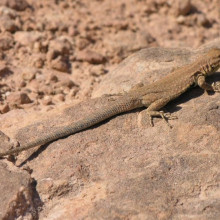
Heat Triggers Sex Change in Lizards by Turning Off Genes
A new study out this week has shown for the first time that heat causes lizard eggs to change sex by switching off a key gene.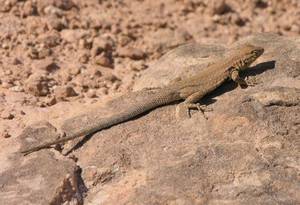 While that may not sound especially revolutionary, it actually means that biologists will now have to think completely differently about the way sex is determined in animals.
While that may not sound especially revolutionary, it actually means that biologists will now have to think completely differently about the way sex is determined in animals.
Previously it was thought that sex is determined in one of two ways. For humans, and other mammals as well as birds and some amphibians, an individual animal is male or female depending on the sex chromosomes it inherited from its parents. Human females have two X chromosomes, while males have one X and one Y.
For other animals, sex is controlled without the help of sex chromosomes - but instead is governed by temperature. so, in some reptiles, like crocs and turtles, the number of male and female young hatching from a clutch of eggs depends on the temperature that the eggs were kept at while they were being incubated.
Now researchers from the Institute for Applied Ecology at the University of Canberra in Australia have discovered that one of their native lizards, the central bearded dragon lizard, not only have sex chromosomes but they are also affected by temperature - if eggs are incubated at higher temperatures then ones that would develop into males based on their chromosomes, instead turn into females.
The researchers think that temperature is effectively switching off the affect of the male gene - the presence of which makes an individual a male, a bit like the Y chromosome in humans. By switching off that gene, the unborn lizard becomes female.
As well as rocking our understanding of how sex is determined, this latest piece of research might also have important implications for the survival of species in the face of climate change. If there are too many females being produced and not enough males for them to partner with, it can spell serious problems for the survival of species, since an increasingly warm world could be an increasingly female world, at least as far as lizards go...
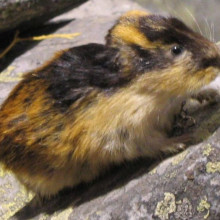
Looking at Lemmings
It's a common belief that lemmings commit suicide by flinging themselves off cliffs en masse. However, this isn't actually true. Like most of us, lemmings are quite keen to stay alive, but their existence may threatened by climate change. The little rodents live up in the Arctic, and so the Wildlife Conservation Society thinks that they may be susceptible to the impact of changing climate.  A change in the lemming population could have big knock-on effects in the wider ecosystem, as they are an important food source for a number of predators, including arctic foxes, birds of prey, weasels, wolverines, and grizzly bears. In fact, the population of many predators fluctuates in response to dips in lemming numbers.The most important thing for lemmings is snow. They live in deep snow burrows, so the snow has to be thick enough to insulate them from the cold. If snow arrives late, or melts early, then this could actually mean more chilly spells for the lemmings. Also, unusual warm weather in the Arctic winter means freezing rain, and cycles of thawing an freezing. This can coat plants with ice, meaning the lemmings can't eat their usual food.Next month, the Wildlife Conservation Society plan to launch a major study to look at how the lemming population, and their predators, are changing. It's one part of a large Canadian project, called the Arctic Wildlife Observatories Linking Vulnerable Ecosystems, which gives you the rather clever acronym ArcticWOLVES.
A change in the lemming population could have big knock-on effects in the wider ecosystem, as they are an important food source for a number of predators, including arctic foxes, birds of prey, weasels, wolverines, and grizzly bears. In fact, the population of many predators fluctuates in response to dips in lemming numbers.The most important thing for lemmings is snow. They live in deep snow burrows, so the snow has to be thick enough to insulate them from the cold. If snow arrives late, or melts early, then this could actually mean more chilly spells for the lemmings. Also, unusual warm weather in the Arctic winter means freezing rain, and cycles of thawing an freezing. This can coat plants with ice, meaning the lemmings can't eat their usual food.Next month, the Wildlife Conservation Society plan to launch a major study to look at how the lemming population, and their predators, are changing. It's one part of a large Canadian project, called the Arctic Wildlife Observatories Linking Vulnerable Ecosystems, which gives you the rather clever acronym ArcticWOLVES.
Why does it feel good when we stretch our muscles?
(The jury is still out on this one, feel free to get in touch if you have an answer)Conrad, Canada: It's relativism (thought not in the Einstein sense, in the relative way that if you're hitting yourself on the head with a hammer, it feels good when you stop). Muscles get sore from micro-tears and trauma induced by exertion, I', guessing that stretching, when sore, probably has a temporary de-sensitising effect on the sore muscles which provides, for a few moments at least, a respite from the ache. Stretching or massaging is probably similar to when a nurse pinches you before administering an injection, which over-stimulates the nerve receptors in the muscles and temporarily numbs the area from registering further pain.
Evgeniy, Japan: Relaxed muscles need soft and at the same time strenuous exertion. This operation prepares them for a normal daily job, recovers the normal "working" circulation of the blood and switches from sleeping regime to an active one. These muscles are always connected by neurones to the central nervous system (CNS), which can stimulate centres of pleasure in the brain. Using a simple policy of bribery, the CNS teaches us to perform these actions by giving us a treat whenever we stretch. Stretching is good for your muscles, so the brain encourages you to do it by making it pleasurable.
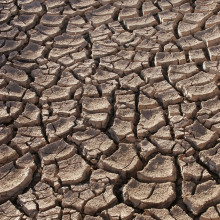
14:10 - Science Update: Deserts
Science Update: Deserts
with Chelsea Wald and Bob Hirshon
Bob - This week for the Naked Scientists, we're going to talk about two deserts on opposite sides of the world. I'm going to tell you why scientists think the already dry American Southwest is drying out even more, but first, Chelsea has this report on a desert region in Africa that's been very much in the news.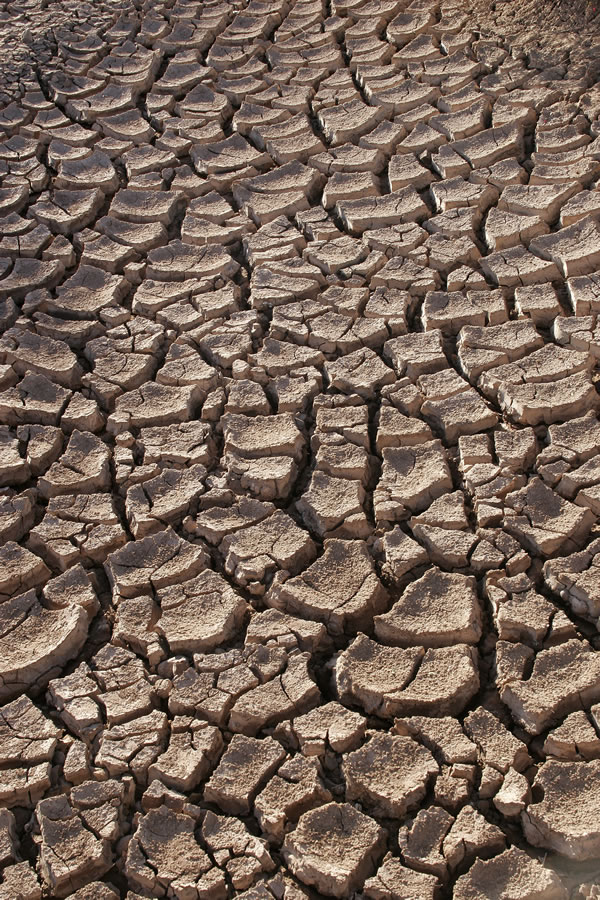 Chelsea - The war-torn Darfur region in Sudan was once home to an ancient mega-lake, and some of that water may still be there. Geologist Farouk El-Baz is director of the Boston University Center for Remote Sensing. He says satellite radar data show that thousands of years ago, Darfur was a savannah with a lake the size of the state of Massachusetts. His team is certain that deep wells could tap the remains of that lake.Farouk El-Baz (Boston University): And the reason that we are absolutely convinced that this is the case is the fact that we do have a very similar structure just north of the area we're talking about, in the western desert of Egypt, and it has plenty of water. There are now 500 wells drilled through it, and there is potentially something like 150,000 acres of arable land, and the water that's available there could supply all of these acres for agriculture over 100 years.Chelsea - Since the brutal conflict in Darfur is in part over water, there's hope that this new source could help bring peace. Bob - Thanks, Chelsea. By mid-century, the American southwest and parts of northern Mexico may settle into a permanent drought: one that, for dryness, could rival the Dust Bowl in the Depression-era Great Plains, or the Southwest's own severe drought of the 1950's, the worst of the century. This is from climatologist Richard Seager of Columbia University's Lamont Doherty Earth Observatory. He and his colleagues analyzed 19 different climate models used in the Intergovernmental Panel on Climate Change's Fourth Assessment Report. The data suggest that a drying trend has already begun in sub-tropical areas worldwide. Richard Seager (Lamont Doherty Earth Observatory): It begins right at the junction of the 20th century and the 21st century. So the models say that yes, this should already be underway. Bob - Seager says that unlike past droughts, the current drying trend is caused by changes in air circulation due to global warming. A long-term drought would increase the strain on already-overtaxed water sources like the Colorado River. That could force the region's rapidly growing population to re-evaluate its priorities.Richard Seager: Throughout the Southwest, it's not people that are the main users of the water, but it's actually agriculture, even in desert states like Arizona... so, there's going to be some sort of difficult decisions that are going to have to be made about how the diminishing water resources get allocated. Bob - He also notes that although there's probably nothing we can do to stop the drying trend completely, restricting greenhouse gas emissions may potentially limit just how bad it gets. Chelsea - Thanks, Bob. We'll be back next time with stories about the things that profoundly influence your buying decisions like, of course, celebrities. Until then, I'm Chelsea WaldBob - And I'm Bob Hirshon, for AAAS, The Science Society. Back to you, Naked Scientists!
Chelsea - The war-torn Darfur region in Sudan was once home to an ancient mega-lake, and some of that water may still be there. Geologist Farouk El-Baz is director of the Boston University Center for Remote Sensing. He says satellite radar data show that thousands of years ago, Darfur was a savannah with a lake the size of the state of Massachusetts. His team is certain that deep wells could tap the remains of that lake.Farouk El-Baz (Boston University): And the reason that we are absolutely convinced that this is the case is the fact that we do have a very similar structure just north of the area we're talking about, in the western desert of Egypt, and it has plenty of water. There are now 500 wells drilled through it, and there is potentially something like 150,000 acres of arable land, and the water that's available there could supply all of these acres for agriculture over 100 years.Chelsea - Since the brutal conflict in Darfur is in part over water, there's hope that this new source could help bring peace. Bob - Thanks, Chelsea. By mid-century, the American southwest and parts of northern Mexico may settle into a permanent drought: one that, for dryness, could rival the Dust Bowl in the Depression-era Great Plains, or the Southwest's own severe drought of the 1950's, the worst of the century. This is from climatologist Richard Seager of Columbia University's Lamont Doherty Earth Observatory. He and his colleagues analyzed 19 different climate models used in the Intergovernmental Panel on Climate Change's Fourth Assessment Report. The data suggest that a drying trend has already begun in sub-tropical areas worldwide. Richard Seager (Lamont Doherty Earth Observatory): It begins right at the junction of the 20th century and the 21st century. So the models say that yes, this should already be underway. Bob - Seager says that unlike past droughts, the current drying trend is caused by changes in air circulation due to global warming. A long-term drought would increase the strain on already-overtaxed water sources like the Colorado River. That could force the region's rapidly growing population to re-evaluate its priorities.Richard Seager: Throughout the Southwest, it's not people that are the main users of the water, but it's actually agriculture, even in desert states like Arizona... so, there's going to be some sort of difficult decisions that are going to have to be made about how the diminishing water resources get allocated. Bob - He also notes that although there's probably nothing we can do to stop the drying trend completely, restricting greenhouse gas emissions may potentially limit just how bad it gets. Chelsea - Thanks, Bob. We'll be back next time with stories about the things that profoundly influence your buying decisions like, of course, celebrities. Until then, I'm Chelsea WaldBob - And I'm Bob Hirshon, for AAAS, The Science Society. Back to you, Naked Scientists!

24:47 - Coral Conservation
Coral Conservation
with Annelise Hagan, University of Cambridge
Helen - We've all seen pictures of colourful coral reefs in magazines and TV, but what are coral reefs made of? Are they living, are they dead? What are the animals which actually live on the reef?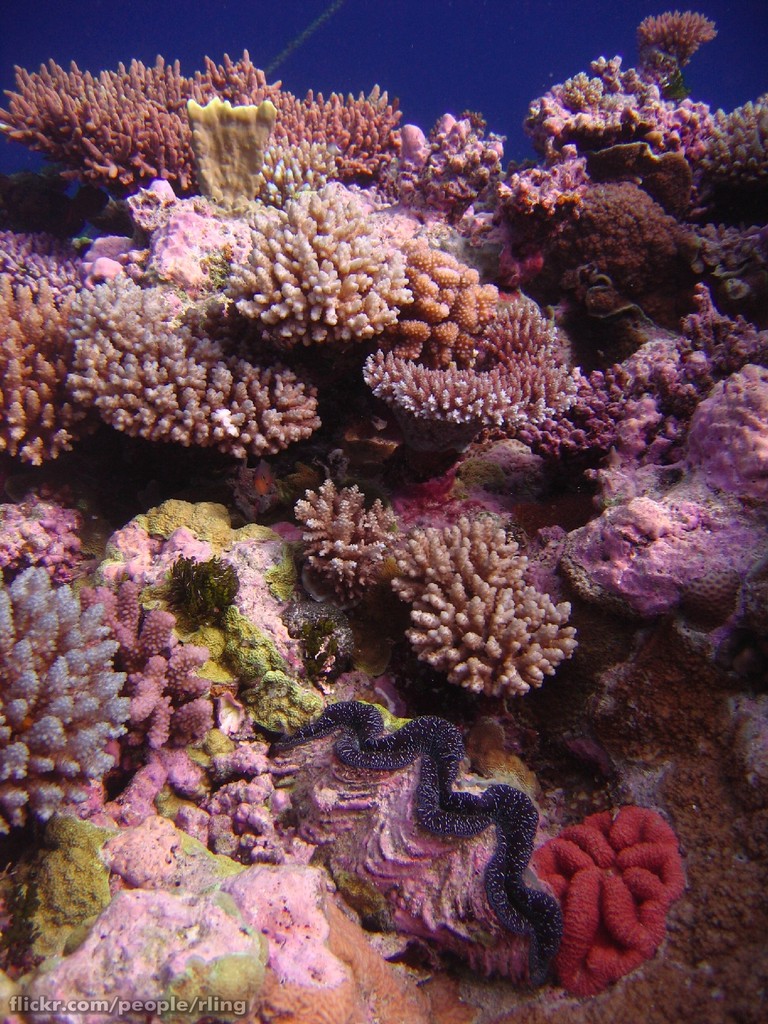 Annelise - Well yes, as you say Helen, most people will have seen coral reefs, either first hand by snorkelling or scuba diving, or on television, in newspapers; Coral reefs are a hot topic at the moment. Coral Reefs are actually comprised of tiny animals called Coral Polyps, which lay down a calcium carbonate limestone skeleton. It's this skeleton that, over hundreds of thousands of years forms the very large reef structure. Within those coral animals, they have a symbiotic relationship with microscopic algae called Zooxanthellae, and these enable the coral to lay down the calcium carbonate skeleton, so they're a very important part of the coral reef ecosystem.Helen - And as we see in these beautiful pictures, and those of us who are lucky to see them in person when diving, there are obviously many, many other animals which live around the reef. Aren't they one of the most diverse ecosystems in the world, on a par with rainforests?Annelise - Yes, they're often described as the rainforests of the sea, they host numerous coral species, fish species, invertebrates... Not only are they very important for their biodiversity, but hundreds of people around the world depend on coral reefs for their financial gain, through tourism, fisheries and the structures that reefs form are an important structural protection, a barrier against wave impact. Due to the location of coral reefs in the tropics, often these surround low-lying areas, and so are very important barriers against wave erosion.Helen - As part of your job working with the Living Oceans Foundation, you went out to Aceh to look at the effect after the tsunami...Annelise - That's correct, we actually went out 10 months after the tsunami hit. We went up the west coast of Sumatra and surveyed on the off shore islands. We didn't find a huge amount of damage, we were actually quite surprised; over half the reefs we surveyed there was no tsunami damage at all, that's the same as studies in Thailand. We were surprised that the waves passed over the coral reef itself and although it did have a big impact on land, the reefs are very resilient to such powerful wave energy.Helen - I guess, in a way, what we found after the tsunami wasn't so much that it had damaged the reefs, but more that where we have damaged the coral reef, such as for buildings, or by using destructive fishing techniques like dynamite fishing...Annelise - Absolutely. Another point is that where they've cleared mangroves for coastal development, mangroves are very important for coastal protection. So where the reef has been mined for the limestone for building material, and also the mangrove has been cleared as they've developed the coastline, that's where the worst tsunami impact was.Helen - Do we have a figure for how many people live within 100km of a coral reef?Annelise - About 8% of the world's population, so that's a huge number of people living very close to a coral reef. Most of them, their livelihoods are driven from the coral reef itself, so the pressure put on coral reefs at the moment in incredibly high.Kat - You've been talking about coral reefs in the tropics, do you find corals anywhere else around the world?Annelise - Yes, you can find corals around the UK for example, but they do not form large reef-like structures. We're talking about specifically tropical coral reefs, and these are actually the ones which have the symbiotic Zooxanthellae, so they're called Hermatipic corals, they're the ones which lay down the skeleton and build this huge, huge structure.Kat - So they're less important around islands like ours?Annelise - I wouldn't say they're less important, but certainly we don't depend on them as strongly as people in the tropics who don't necessarily have alternatives to depend on.Helen - There are always the deep-sea corals, which don't have the Zooxanthellae in their tissues, they live very deep down in the dark parts of the ocean. We've already touched a little on the effects that were having on the reefs around the world, what do you think the main problems we pose for reefs might be?Annelise - The biggest problems we've seen in recent years actually is a natural phenomenon, the El Nino ocean warming that happened in 1997-1998 had a very, very severe impact on the corals. This happens because the water temperature increased, the corals became stressed and when they become stressed they spit out their Zooxanthellae, microscopic algae or the algae become degraded in situ within their tissue. Without these Zooxanthellae the coral can't actually live. This is called coral bleaching.Helen - It's called that because they turn completely white?Annelise - Well it's not that the corals turn white, but the Zooxanthellae actually give them their colours, so if the Zooxanthellae is not there the coral is actually transparent and the white that you're seeing is the coral skeleton itself. An increase in water temperature causes this bleaching phenomenon, and this was very prevalent in 1998 especially in the western Indian Ocean, where over 90% of some corals were bleached, in the Maldives and Seychelles especially.Helen - So the corals can't feed if they don't have the Zooxanthellae, do they definitely die, or can they recover?Annelise - They can recover, if the stress is not prolonged then the corals can actually regain their Zooxanthellae and then they will regain their colour, and go on living, it may just be that their health is degraded for a short while. If the stress is prolonged, if the temperature stays high for a few months, then the corals don't actually regain their Zooxanthellae and they actually die. Helen - You've recently been using a technique to study coral reefs from the air. How does that work?Annelise - This is a very clever technique really, we employ a sensor called a Compact Airborne Spectrographic Imager (CASI) fixed onto a seaplane and flown over an area of interest. It records the amount of light reflected from different things on the seabed, so it can tell you what's coral, algae or sea grass. We still need to have divers in the water though, collecting GPS data to calibrate the sensor. It allows you to collect a much greater amount of data than using divers alone.
Annelise - Well yes, as you say Helen, most people will have seen coral reefs, either first hand by snorkelling or scuba diving, or on television, in newspapers; Coral reefs are a hot topic at the moment. Coral Reefs are actually comprised of tiny animals called Coral Polyps, which lay down a calcium carbonate limestone skeleton. It's this skeleton that, over hundreds of thousands of years forms the very large reef structure. Within those coral animals, they have a symbiotic relationship with microscopic algae called Zooxanthellae, and these enable the coral to lay down the calcium carbonate skeleton, so they're a very important part of the coral reef ecosystem.Helen - And as we see in these beautiful pictures, and those of us who are lucky to see them in person when diving, there are obviously many, many other animals which live around the reef. Aren't they one of the most diverse ecosystems in the world, on a par with rainforests?Annelise - Yes, they're often described as the rainforests of the sea, they host numerous coral species, fish species, invertebrates... Not only are they very important for their biodiversity, but hundreds of people around the world depend on coral reefs for their financial gain, through tourism, fisheries and the structures that reefs form are an important structural protection, a barrier against wave impact. Due to the location of coral reefs in the tropics, often these surround low-lying areas, and so are very important barriers against wave erosion.Helen - As part of your job working with the Living Oceans Foundation, you went out to Aceh to look at the effect after the tsunami...Annelise - That's correct, we actually went out 10 months after the tsunami hit. We went up the west coast of Sumatra and surveyed on the off shore islands. We didn't find a huge amount of damage, we were actually quite surprised; over half the reefs we surveyed there was no tsunami damage at all, that's the same as studies in Thailand. We were surprised that the waves passed over the coral reef itself and although it did have a big impact on land, the reefs are very resilient to such powerful wave energy.Helen - I guess, in a way, what we found after the tsunami wasn't so much that it had damaged the reefs, but more that where we have damaged the coral reef, such as for buildings, or by using destructive fishing techniques like dynamite fishing...Annelise - Absolutely. Another point is that where they've cleared mangroves for coastal development, mangroves are very important for coastal protection. So where the reef has been mined for the limestone for building material, and also the mangrove has been cleared as they've developed the coastline, that's where the worst tsunami impact was.Helen - Do we have a figure for how many people live within 100km of a coral reef?Annelise - About 8% of the world's population, so that's a huge number of people living very close to a coral reef. Most of them, their livelihoods are driven from the coral reef itself, so the pressure put on coral reefs at the moment in incredibly high.Kat - You've been talking about coral reefs in the tropics, do you find corals anywhere else around the world?Annelise - Yes, you can find corals around the UK for example, but they do not form large reef-like structures. We're talking about specifically tropical coral reefs, and these are actually the ones which have the symbiotic Zooxanthellae, so they're called Hermatipic corals, they're the ones which lay down the skeleton and build this huge, huge structure.Kat - So they're less important around islands like ours?Annelise - I wouldn't say they're less important, but certainly we don't depend on them as strongly as people in the tropics who don't necessarily have alternatives to depend on.Helen - There are always the deep-sea corals, which don't have the Zooxanthellae in their tissues, they live very deep down in the dark parts of the ocean. We've already touched a little on the effects that were having on the reefs around the world, what do you think the main problems we pose for reefs might be?Annelise - The biggest problems we've seen in recent years actually is a natural phenomenon, the El Nino ocean warming that happened in 1997-1998 had a very, very severe impact on the corals. This happens because the water temperature increased, the corals became stressed and when they become stressed they spit out their Zooxanthellae, microscopic algae or the algae become degraded in situ within their tissue. Without these Zooxanthellae the coral can't actually live. This is called coral bleaching.Helen - It's called that because they turn completely white?Annelise - Well it's not that the corals turn white, but the Zooxanthellae actually give them their colours, so if the Zooxanthellae is not there the coral is actually transparent and the white that you're seeing is the coral skeleton itself. An increase in water temperature causes this bleaching phenomenon, and this was very prevalent in 1998 especially in the western Indian Ocean, where over 90% of some corals were bleached, in the Maldives and Seychelles especially.Helen - So the corals can't feed if they don't have the Zooxanthellae, do they definitely die, or can they recover?Annelise - They can recover, if the stress is not prolonged then the corals can actually regain their Zooxanthellae and then they will regain their colour, and go on living, it may just be that their health is degraded for a short while. If the stress is prolonged, if the temperature stays high for a few months, then the corals don't actually regain their Zooxanthellae and they actually die. Helen - You've recently been using a technique to study coral reefs from the air. How does that work?Annelise - This is a very clever technique really, we employ a sensor called a Compact Airborne Spectrographic Imager (CASI) fixed onto a seaplane and flown over an area of interest. It records the amount of light reflected from different things on the seabed, so it can tell you what's coral, algae or sea grass. We still need to have divers in the water though, collecting GPS data to calibrate the sensor. It allows you to collect a much greater amount of data than using divers alone.
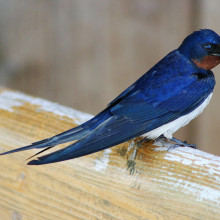
31:51 - Metals in Feathers tell Migration Paths
Metals in Feathers tell Migration Paths
with Laura Font, Durham University
Chris - Every year, millions of birds migrate around the planet looking for a warm place to spend their winter and a cool place, with plenty of food, to spend the summer. Keeping tabs on where they go and where they've been isn't easy. We really need this information to help conservationists to protect threatened species and also to understand how diseases like avian flu might be spreading around. Until now though, the process has been very difficult. Attaching trackers to individual birds can be traumatic for the animals and it can also weigh them down, especially if they're small. But now, Durham University researcher Laura Font has found a way around the problem using chemistry. She measures the relative amounts of different isotopes, or forms, of the metal strontium in a bird's feathers. As the levels of these strontium isotopes very in a known way from one geographic location to another, and birds usually shed and then re-grow their feathers before they migrate, the strontium in the feathers can be used as a kind of chemical fingerprint telling researchers where the bird has come from. 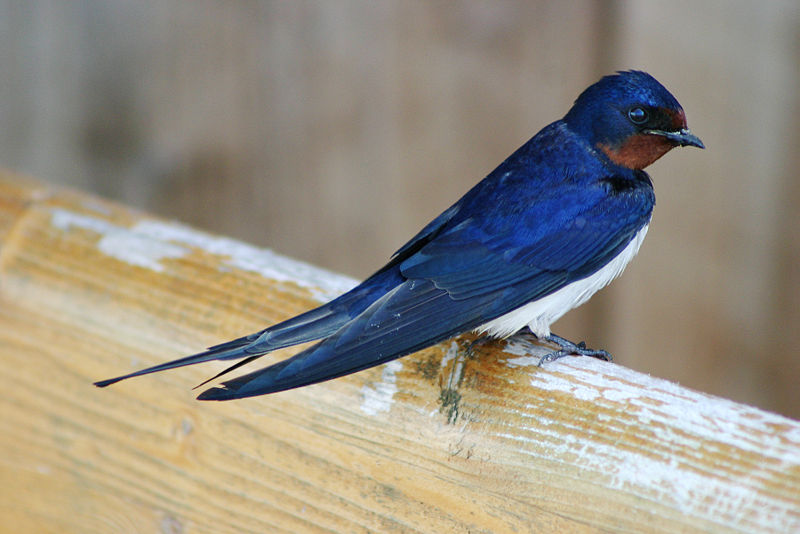 Laura - We've been developing a technique to measure strontium isotopes in bird feathers because there's a biologist in the department of biology of Durham university who came to us with a problem. Basically, they wanted to know if we could analyse the strontium isotopes in bird feathers to track migration paths. This type of analysis has been done in bones of birds, but obviously you would have to capture the bird, kill it and extract a bone sample.Chris - So what's the scientific basis for using a. Strontium and b. feathers?Laura - The strontium ratios that we analyse in rock samples are very characteristic of the different morphologies and the age of the rock. If a bird is in a particular environment with a particular type of rock, the ratio from this environment will also be in the tissues of the bird. This is because the ratios of the rock will be passed to the soil and then to the plants, the insects that eat these plants and then the birds that eat these insects. The strontium ratio goes through this chain.Chris - And why do you use feathers?Laura - Migratory birds change their feathers when they are in the winter location and the summer location, changing feathers each season. So then each feather will reflect the ratios in the winter location or when they moult in the summer location.Chris - So you can get a pretty accurate picture of where the bird has been, where it's come from and gone to. These amounts of strontium must be absolutely tiny in the feathers, how do you actually measure it?Laura - We use a special technique with micro-columns with a special label. We dissolve the feather, we pass it through more columns and then we collect the strontium fraction. We load the solution on filaments and we analyse it with a thermal ionisation mass spectrometer.Chris - And that gives you a picture of what the relative ratios are?Laura - That gives you a value, then you also have to analyse the soils and look at the geology of the areas where you think these birds spend their winters and their summers.Chris - This is very useful for people who happen to like looking at where birds have come and gone but there must be some important medical and scientific principles which would benefit from this, I can think immediately that we're all worried about avian flu...Laura - Avian Flu, yes, because if we manage to define very well the migration routes of migratory birds, then if we know that this is a species that can potentially carry bird flu, we can find the origin of carriers of the flu.
Laura - We've been developing a technique to measure strontium isotopes in bird feathers because there's a biologist in the department of biology of Durham university who came to us with a problem. Basically, they wanted to know if we could analyse the strontium isotopes in bird feathers to track migration paths. This type of analysis has been done in bones of birds, but obviously you would have to capture the bird, kill it and extract a bone sample.Chris - So what's the scientific basis for using a. Strontium and b. feathers?Laura - The strontium ratios that we analyse in rock samples are very characteristic of the different morphologies and the age of the rock. If a bird is in a particular environment with a particular type of rock, the ratio from this environment will also be in the tissues of the bird. This is because the ratios of the rock will be passed to the soil and then to the plants, the insects that eat these plants and then the birds that eat these insects. The strontium ratio goes through this chain.Chris - And why do you use feathers?Laura - Migratory birds change their feathers when they are in the winter location and the summer location, changing feathers each season. So then each feather will reflect the ratios in the winter location or when they moult in the summer location.Chris - So you can get a pretty accurate picture of where the bird has been, where it's come from and gone to. These amounts of strontium must be absolutely tiny in the feathers, how do you actually measure it?Laura - We use a special technique with micro-columns with a special label. We dissolve the feather, we pass it through more columns and then we collect the strontium fraction. We load the solution on filaments and we analyse it with a thermal ionisation mass spectrometer.Chris - And that gives you a picture of what the relative ratios are?Laura - That gives you a value, then you also have to analyse the soils and look at the geology of the areas where you think these birds spend their winters and their summers.Chris - This is very useful for people who happen to like looking at where birds have come and gone but there must be some important medical and scientific principles which would benefit from this, I can think immediately that we're all worried about avian flu...Laura - Avian Flu, yes, because if we manage to define very well the migration routes of migratory birds, then if we know that this is a species that can potentially carry bird flu, we can find the origin of carriers of the flu.
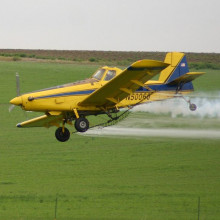
36:35 - Nutrient Polution
Nutrient Polution
with Stan Harpole, University of California, Irvine
Helen - You describe yourself as a Community Ecologist, what does that actually mean?Stan - I study how different species, different organisms, coexist. How they interact, what controls biodiversity and what contributes to loss of biodiversity.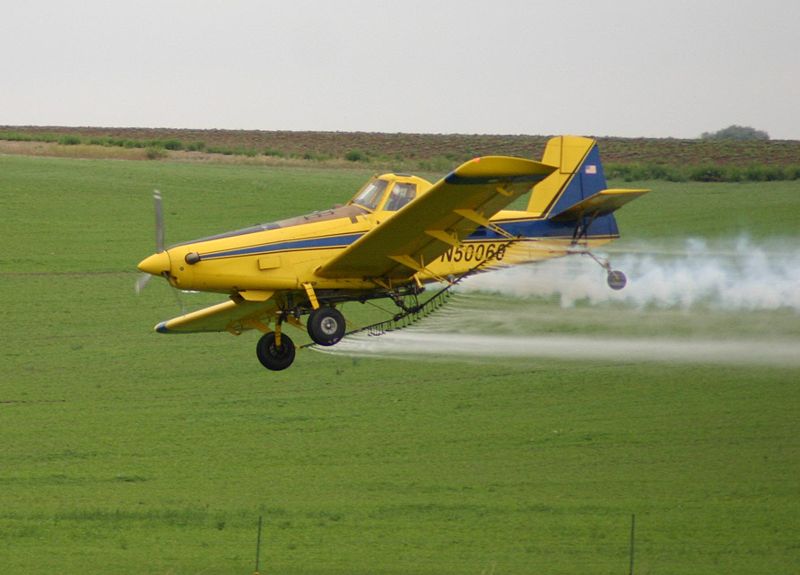 Helen - Cool, sounds great. In your latest paper which came out in Nature, you looked at crop fertilisers and the number of species, or biodiversity, that we find in grasslands in California, why did you expect there to be a link between fertilisers and biodiversity?Stan - There's a long-standing theoretical prediction that the diversity of niches, and by niche I mean the different ways that species compete and specialise in nature, that the more complex the niches, the greater the number of niches, the more species there should be. If you do something that reduces the number of niches, there should be fewer species. For plants, they're competing for things like nitrogen, phosphorus, potassium, water, light and all these different things and we're finding that natural systems are really quite complex. Plants are competing for many, many different things simultaneously. As we add nitrogen or phosphorus etc lose the niche, and as we add more and more things to make them superabundant, so the plants no longer compete for them, we see a loss of species. Helen - It seems to be a little counter-intuitive, I would possible expect that you would get more species if there were more nutrients to go around. It seems lightly odd that this is the other way around.Stan - It does, in one way it's been described as having too many good things.Helen - I see...Stan - When you add too much nitrogen or too much phosphorus etc, the system becomes limited by just one thing; possibly just light, perhaps magnesium or another resource, so there is only one way for the species to differentiate and compete, and fewer opportunities for them to co-exist. That's what we see in aquatic systems too, as we add more and more fertilisers, it becomes very dark. The algae grow very quickly and it becomes so dark that there's only one species best adapted to those low light conditions that can survive.Helen - So we have these theories about the interplay between fertilisers and biodiversity, how did you go about testing these theories to see what's actually happening in the real world?Stan - I work in grassland communities, these are natural, prairie type systems with many native species and many exotic species but there's fairly high grassland diversity. We added combinations of nitrogen, phosphorus, potassium and water and found that if we added just one thing there was little impact on diversity. As we added more things, up to all four things at once, we saw the biggest loss of diversity. This is evidence for the loss of niche dimension. As we take away each one of these specialities that plants have, there are fewer opportunities for them to co-exist. We end up with, as in aquatic systems, the species that's the best competitor for really high nutrients, but really low light conditions. So just one species.Helen - How long did it take for these changes to take place? How long did you keep watching?Stan - This was within two years, so it was very quick. We've also looked at really long-term data sets and this loss of diversity can persist for 150 years. There was a great experiment in the UK, the Park Grass Experiment, they've been applying fertiliser since 1858, so a long time ago, and there's no recovery of species diversity even after all that time, so it can be a very long term effect.Helen - That's amazing. Surely a reduction in biodiversity in terms of field crops, and I'm assuming the fertilisers we're talking about are the sort of things we use for crops...Stan - The problem is that they don't stay on just the agricultural land; the nitrogen can volatilise and go up into the atmosphere then back down as precipitation; phosphorus can wash off into streams and rivers and then into gulfs and coasts and so on. There are very large 'dead zones', huge areas where there has been a lot of fertiliser input, tens of thousands of square kilometres. All this fertiliser causes high algae growth, which causes a really strong decrease in light. One way that marine systems differ from the grassland systems I work on is that as all these algae fall to the bottom of the ocean and die they decompose, and in the process, oxygen is depleted, and this then kills the fish, which creates this 'Dead Zone'.Helen - I'm pretty ignorant about just how much fertiliser we use globally every year, is it really huge amounts that we're still using? I would imagine that organic farming is still a tiny proportion.Stan - Yes, and nitrogen in particular. Humans have become as big an input of nitrogen to natural systems as natural processes are. We are one of the drivers of the nitrogen cycle now, globally.Helen - And you think that also, possibly, there's a link to our burning of fossil fuels and this input of nutrients into systems, is that right?Stan - Absolutely, a lot of nitrogen comes from fossil fuel combustion. These nitric acids then eventually come back down, and usually in places where nitrogen is not so abundant, so we're increasing nitrogen in places which were typically pretty limited in nitrogen.Helen - You mentioned that long term studies don't show much recovery. If we aren't seeing much recovery, is there anything we can do about this in terms of the impact we're having on biodiversity?Stan - I think the main thing is to reduce the inputs of nutrient pollution to natural systems, and that could be changing our fertilisation techniques in managed agricultural systems, reducing fossil fuel combustion... We could also try to manage natural systems to find ways to remove excess nutrients, if possible. There have been some studies trying to restore natural systems by decreasing the amount of nitrogen that's available, but its still early stages.Helen - I would like to bring Annelise Hagan, coral reef specialist, into the conversation now. Stan you've already mentioned how, in aquatic systems certain organisms tend to grow much more quickly under high nutrient conditions and cause 'dead zones'. If we add nutrients to coral reef systems, can we cause this imbalance of algae growth?Annelise - Definitely. Nutrient impact will greatly increase Macroalgae on coral reefs, that's fleshy algae like seaweed. Coral reefs have to have light in order to live so they're very restricted by depth, they only thrive in the upper 30 meters of the oceans. There are lots of animals that want to live within this zone and so competition for space is a huge problem. With nutrient enrichment, the macroalgae can out-compete the corals. It will take over any bare surfaces so coral larvae can't settle and the reef cannot develop any more.Helen - We're seeing that quite a lot, aren't we? We're seeing reefs which are becoming dominated by algae, but then it's very difficult to go back to a situation where it's dominated by coral.Annelise - It is very difficult, and one big problem as well is human impact of overfishing. If the fishermen are removing the herbivorous fish, which can control the macroalgal population, that allows more macroalgae to grow, which will further out compete the corals.
Helen - Cool, sounds great. In your latest paper which came out in Nature, you looked at crop fertilisers and the number of species, or biodiversity, that we find in grasslands in California, why did you expect there to be a link between fertilisers and biodiversity?Stan - There's a long-standing theoretical prediction that the diversity of niches, and by niche I mean the different ways that species compete and specialise in nature, that the more complex the niches, the greater the number of niches, the more species there should be. If you do something that reduces the number of niches, there should be fewer species. For plants, they're competing for things like nitrogen, phosphorus, potassium, water, light and all these different things and we're finding that natural systems are really quite complex. Plants are competing for many, many different things simultaneously. As we add nitrogen or phosphorus etc lose the niche, and as we add more and more things to make them superabundant, so the plants no longer compete for them, we see a loss of species. Helen - It seems to be a little counter-intuitive, I would possible expect that you would get more species if there were more nutrients to go around. It seems lightly odd that this is the other way around.Stan - It does, in one way it's been described as having too many good things.Helen - I see...Stan - When you add too much nitrogen or too much phosphorus etc, the system becomes limited by just one thing; possibly just light, perhaps magnesium or another resource, so there is only one way for the species to differentiate and compete, and fewer opportunities for them to co-exist. That's what we see in aquatic systems too, as we add more and more fertilisers, it becomes very dark. The algae grow very quickly and it becomes so dark that there's only one species best adapted to those low light conditions that can survive.Helen - So we have these theories about the interplay between fertilisers and biodiversity, how did you go about testing these theories to see what's actually happening in the real world?Stan - I work in grassland communities, these are natural, prairie type systems with many native species and many exotic species but there's fairly high grassland diversity. We added combinations of nitrogen, phosphorus, potassium and water and found that if we added just one thing there was little impact on diversity. As we added more things, up to all four things at once, we saw the biggest loss of diversity. This is evidence for the loss of niche dimension. As we take away each one of these specialities that plants have, there are fewer opportunities for them to co-exist. We end up with, as in aquatic systems, the species that's the best competitor for really high nutrients, but really low light conditions. So just one species.Helen - How long did it take for these changes to take place? How long did you keep watching?Stan - This was within two years, so it was very quick. We've also looked at really long-term data sets and this loss of diversity can persist for 150 years. There was a great experiment in the UK, the Park Grass Experiment, they've been applying fertiliser since 1858, so a long time ago, and there's no recovery of species diversity even after all that time, so it can be a very long term effect.Helen - That's amazing. Surely a reduction in biodiversity in terms of field crops, and I'm assuming the fertilisers we're talking about are the sort of things we use for crops...Stan - The problem is that they don't stay on just the agricultural land; the nitrogen can volatilise and go up into the atmosphere then back down as precipitation; phosphorus can wash off into streams and rivers and then into gulfs and coasts and so on. There are very large 'dead zones', huge areas where there has been a lot of fertiliser input, tens of thousands of square kilometres. All this fertiliser causes high algae growth, which causes a really strong decrease in light. One way that marine systems differ from the grassland systems I work on is that as all these algae fall to the bottom of the ocean and die they decompose, and in the process, oxygen is depleted, and this then kills the fish, which creates this 'Dead Zone'.Helen - I'm pretty ignorant about just how much fertiliser we use globally every year, is it really huge amounts that we're still using? I would imagine that organic farming is still a tiny proportion.Stan - Yes, and nitrogen in particular. Humans have become as big an input of nitrogen to natural systems as natural processes are. We are one of the drivers of the nitrogen cycle now, globally.Helen - And you think that also, possibly, there's a link to our burning of fossil fuels and this input of nutrients into systems, is that right?Stan - Absolutely, a lot of nitrogen comes from fossil fuel combustion. These nitric acids then eventually come back down, and usually in places where nitrogen is not so abundant, so we're increasing nitrogen in places which were typically pretty limited in nitrogen.Helen - You mentioned that long term studies don't show much recovery. If we aren't seeing much recovery, is there anything we can do about this in terms of the impact we're having on biodiversity?Stan - I think the main thing is to reduce the inputs of nutrient pollution to natural systems, and that could be changing our fertilisation techniques in managed agricultural systems, reducing fossil fuel combustion... We could also try to manage natural systems to find ways to remove excess nutrients, if possible. There have been some studies trying to restore natural systems by decreasing the amount of nitrogen that's available, but its still early stages.Helen - I would like to bring Annelise Hagan, coral reef specialist, into the conversation now. Stan you've already mentioned how, in aquatic systems certain organisms tend to grow much more quickly under high nutrient conditions and cause 'dead zones'. If we add nutrients to coral reef systems, can we cause this imbalance of algae growth?Annelise - Definitely. Nutrient impact will greatly increase Macroalgae on coral reefs, that's fleshy algae like seaweed. Coral reefs have to have light in order to live so they're very restricted by depth, they only thrive in the upper 30 meters of the oceans. There are lots of animals that want to live within this zone and so competition for space is a huge problem. With nutrient enrichment, the macroalgae can out-compete the corals. It will take over any bare surfaces so coral larvae can't settle and the reef cannot develop any more.Helen - We're seeing that quite a lot, aren't we? We're seeing reefs which are becoming dominated by algae, but then it's very difficult to go back to a situation where it's dominated by coral.Annelise - It is very difficult, and one big problem as well is human impact of overfishing. If the fishermen are removing the herbivorous fish, which can control the macroalgal population, that allows more macroalgae to grow, which will further out compete the corals.
Should we eat farmed or wild salmon?
Obviously there are many problems with taking too many fish from the sea and not leaving enough behind to keep their populations going, but there are also problems associated with eating fish which has been farmed.Fish can escape from farms and 'genetically pollute' wild populations and fish farms have been known to infect wild migrating salmon with parasites. A Canadian study showed that young salmon passing fish farms can pick up sea lice.As Salmon are piscivorous, they eat fish, farmed salmon need to be fed fish which is caught from the wild, so even when eating farmed Salmon, fish still need to be taken from the wild.The Marine Stewardship Council has certified Alaskan Salmon as being sustainable. For more information visit http://www.msc.org/.
Is there a huge mass of plastic waste in the Pacific?
Plastic waste is a huge problem. Researchers working on uninhabited islands often find plastic waste, and often flip-flops! Some enterprising people in the Seychelles have even started using them to make flip-flop art.Ocean currents are likely to bring plastic together in certain areas, so there could well be a mass in the N W Pacific. In fact, shipments of rubber ducks which escaped from damaged tankers have been used to measure ocean currents.











Comments
Add a comment